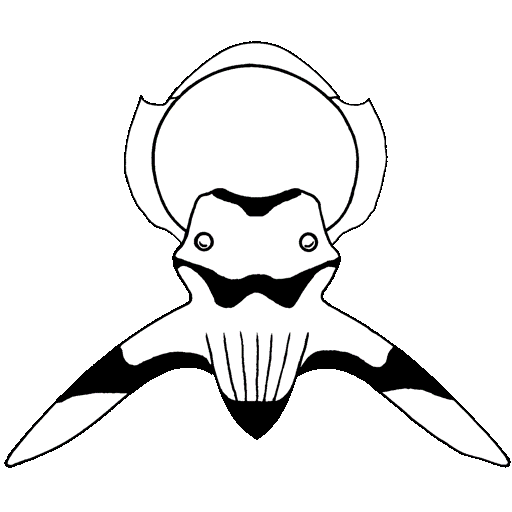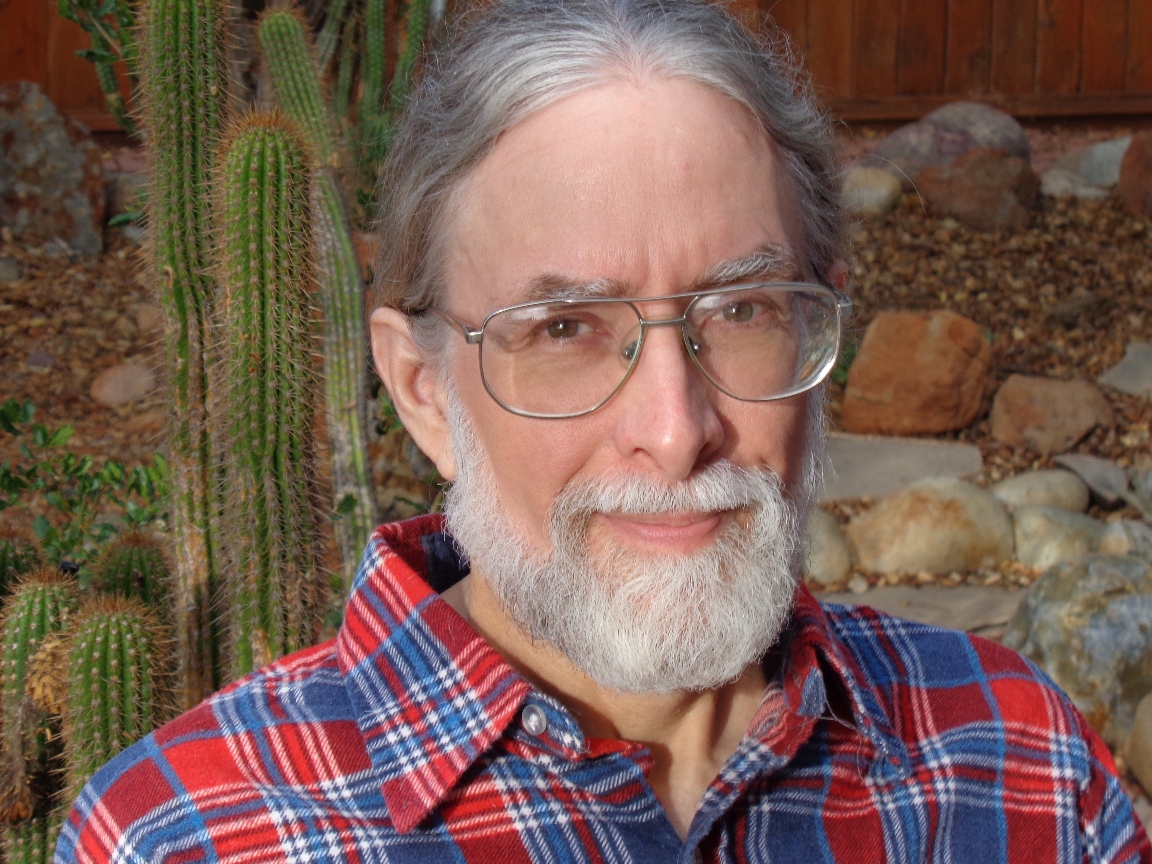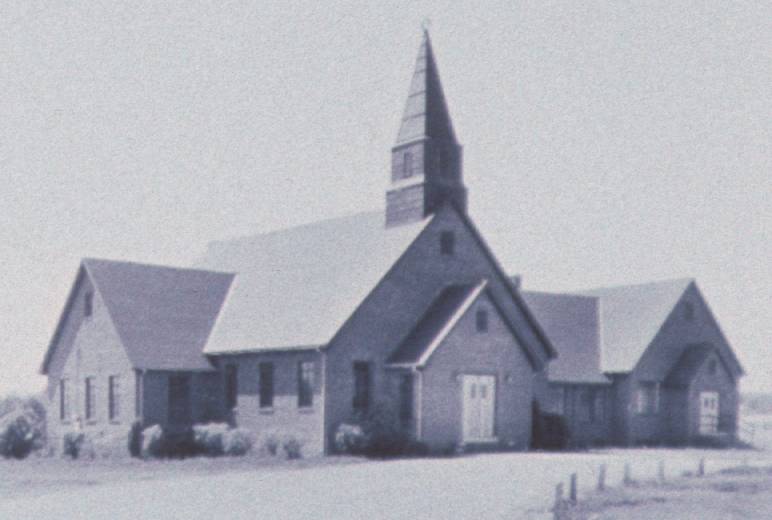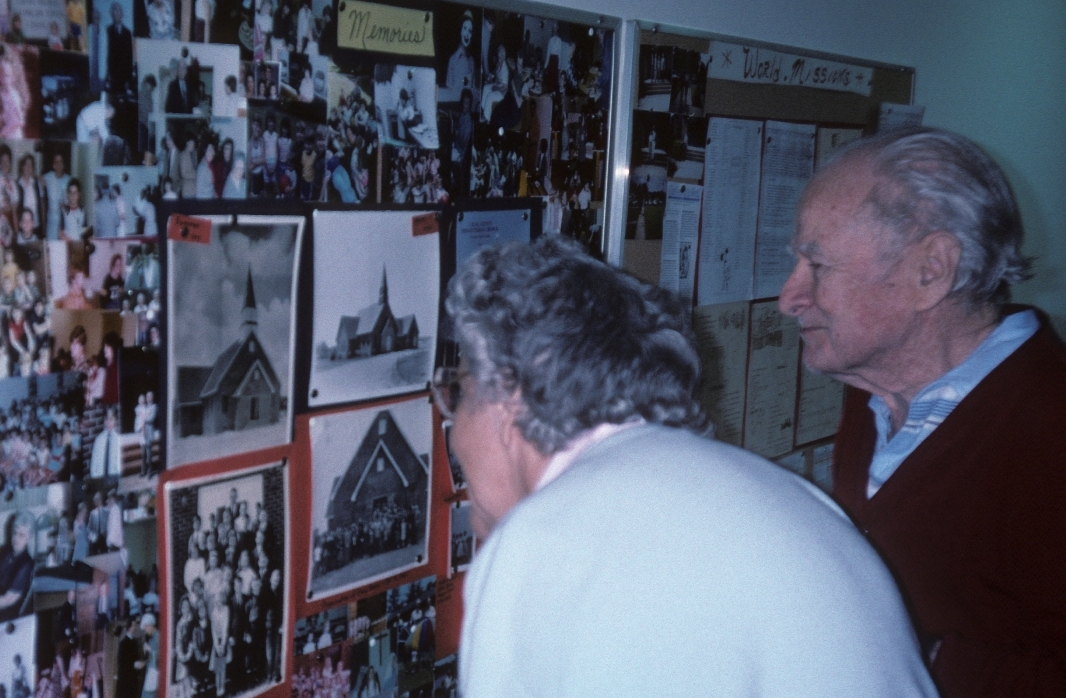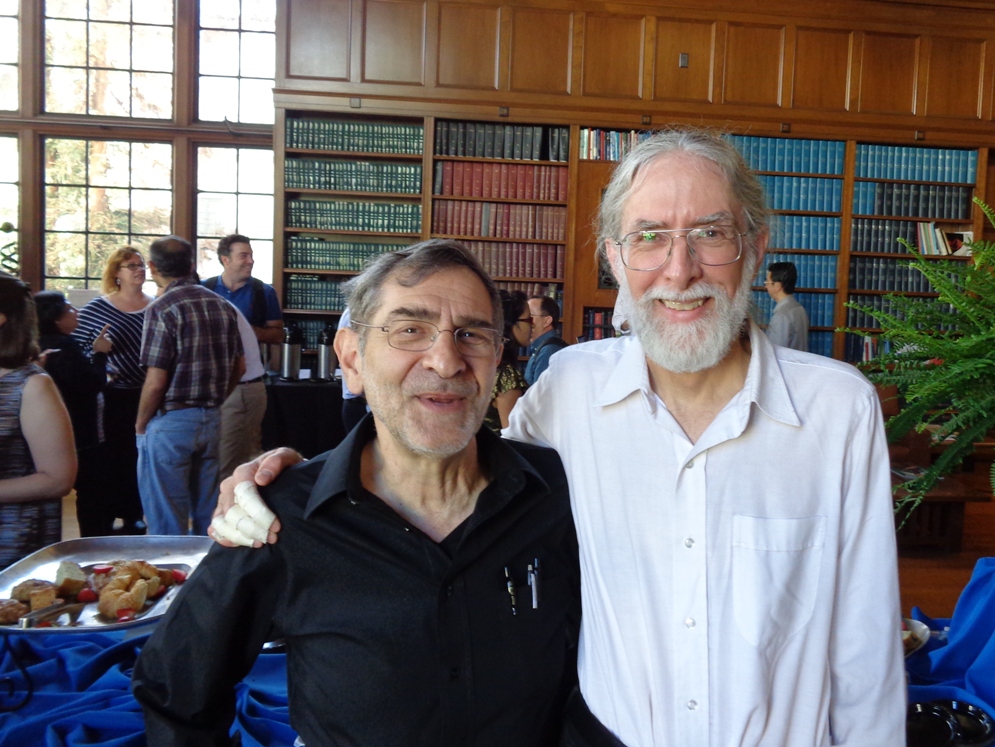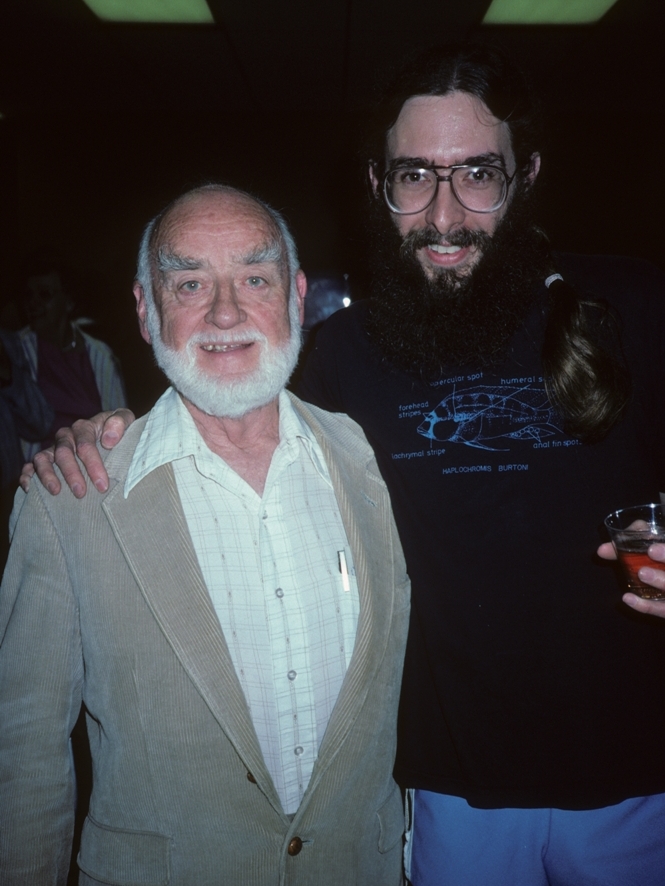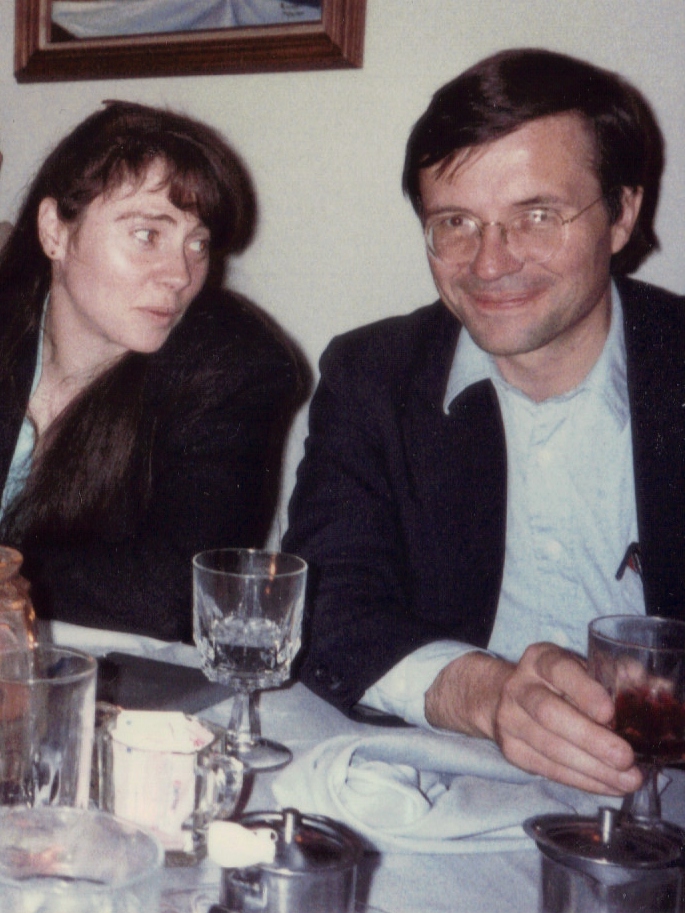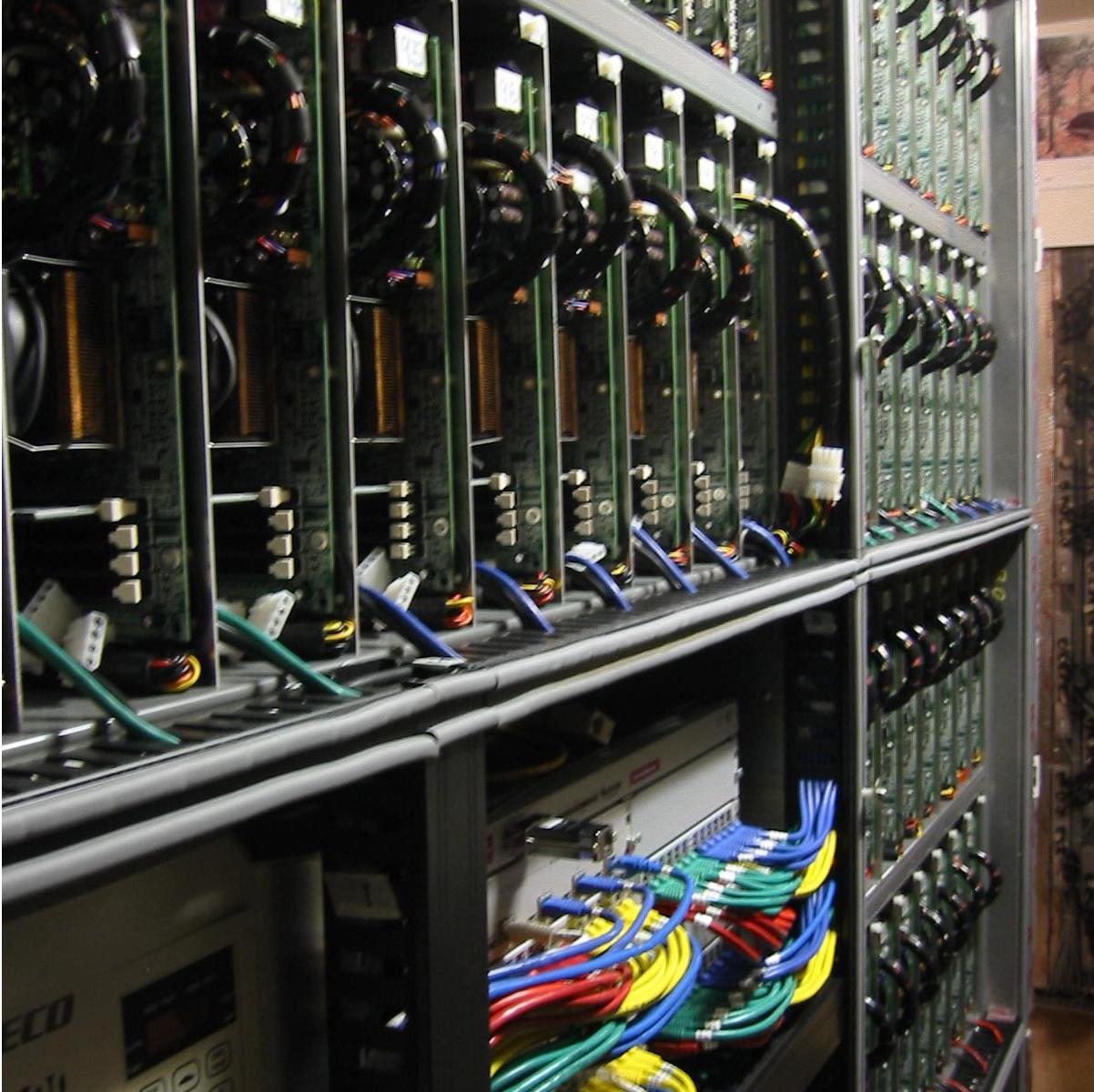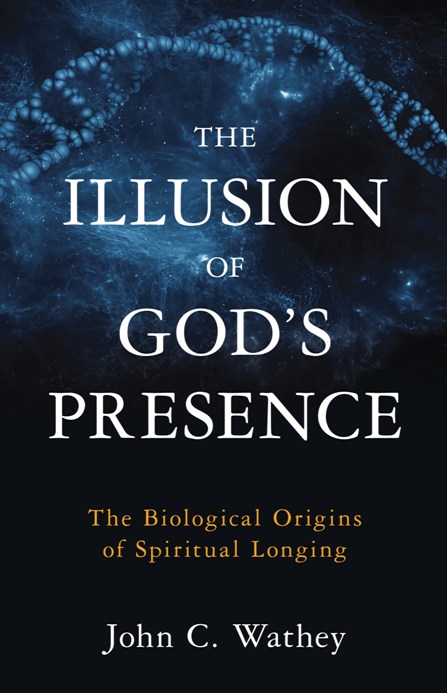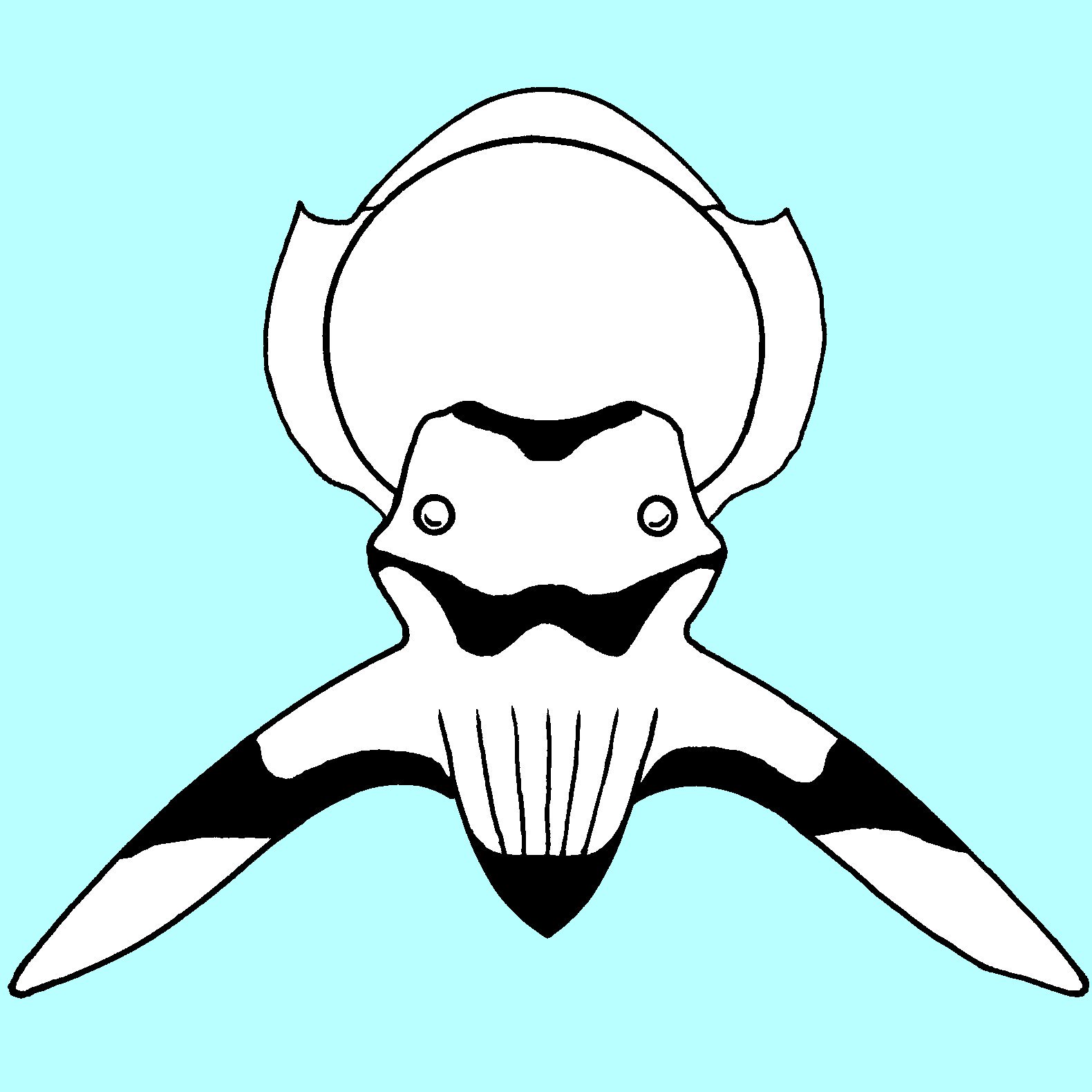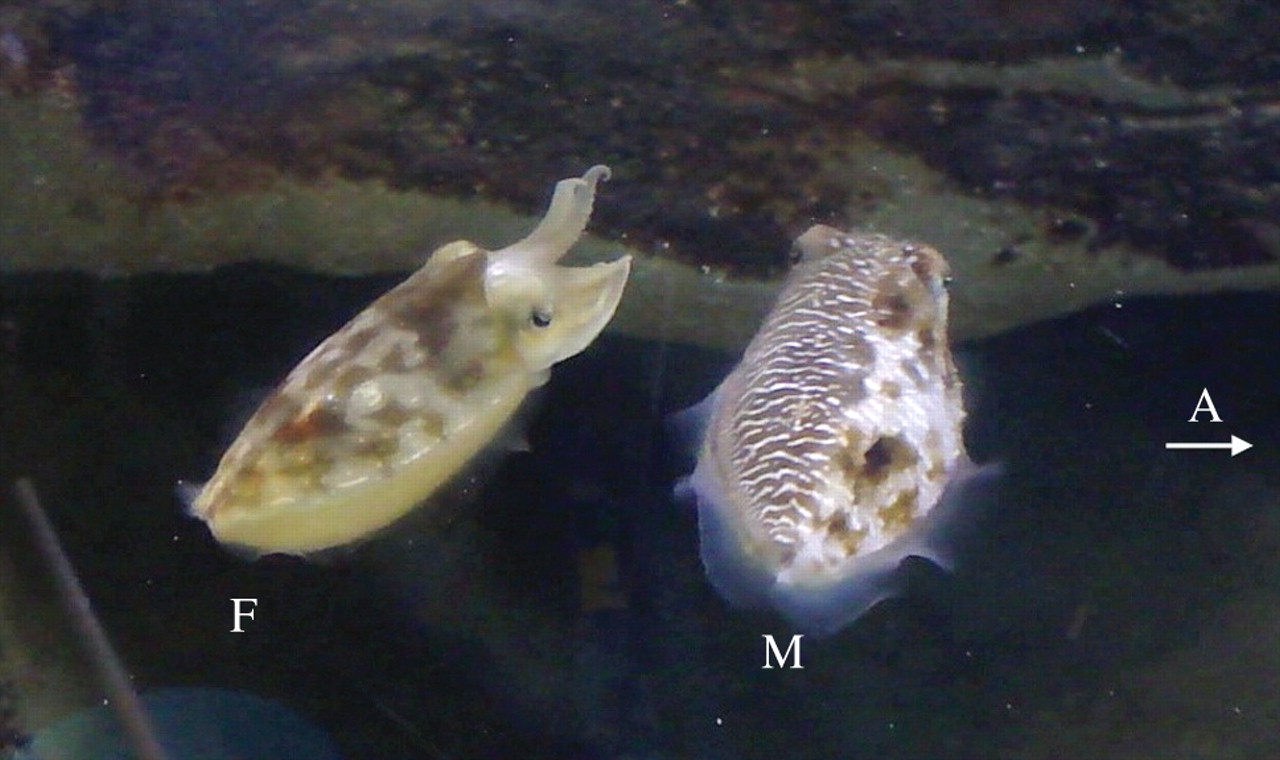About the Author, John C. Wathey
Here I summarize my qualifications to write a book that tries to explain religious feelings, experiences, and behaviors in biological terms. Strictly speaking, no one is qualified for this. Religion is a complex and multifaceted thing, a product of both cultural and biological evolution, and so many scientific disciplines have relevance to it that no one can claim comprehensive expertise. My formal training is in neuroscience, I’ve made most of my living doing computational research on protein folding, and I followed an unconventional career path. My work life does, however, have one unifying theme: evolution. My computational experience with simulated evolution has given me a feel for both the power and quirks of evolution, and I think this is evident in The Illusion of God’s Presence. I have also experienced that illusion myself, which is another kind of qualification.
A child of the postwar baby boom, I grew up in Charlotte, NC, one of a few cities sometimes called the buckle of the Bible belt. My mom was Catholic and my dad Presbyterian, a minor schism for an American family, but one that I now think may have contributed to my leaving religion as a teenager. Even as a small child I had noticed significant differences between my parents’ two churches: the strange Latin incantations, genuflections, and surfeit of candles of my mom’s church, versus the simpler décor and only slightly more comprehensible English sermons of my dad’s. By the time I was in high school, I had noticed far greater differences and contradictions among the world’s religions — which meant that they could not all possibly be true — and I came to understand that I had been a Christian, not because of any evidence, but merely as an accident of birth. Meanwhile something better had been replacing Christianity in my mind. My dad was a chemist, and in addition to giving me a good Presbyterian upbringing, he had also nurtured my love of science. I saw it as a far more satisfying and honest approach to making sense of this marvelous universe and these bewildering lives in which we find ourselves, an outlook that would be greatly reinforced during my college years.
I got my BS in biology at Caltech, where my primary mentors were Jack Pettigrew and Henry Lester. Jack's enthusiasm for nature was infectious, and it was through him that I had my first exposure to neuroethology. Not to be confused with the almost identically spelled neurotheology, neuroethology fuses neuroscience with the study of behavior in its natural context. The rationale is that interpreting the workings of a circuit in the brain will be much easier if we know exactly what problem that circuit is solving, and we can know that if we study an animal that is highly specialized for a well-understood behavior. Examples include vision in barn owls (the problem I worked on with Jack), infrared vision in snakes, sound localization in barn owls, echolocation in bats, the generation and perception of singing in songbirds, perception and communication via electric fields in weakly electric fish, and sexual pair-bonding in monogamous prairie voles.
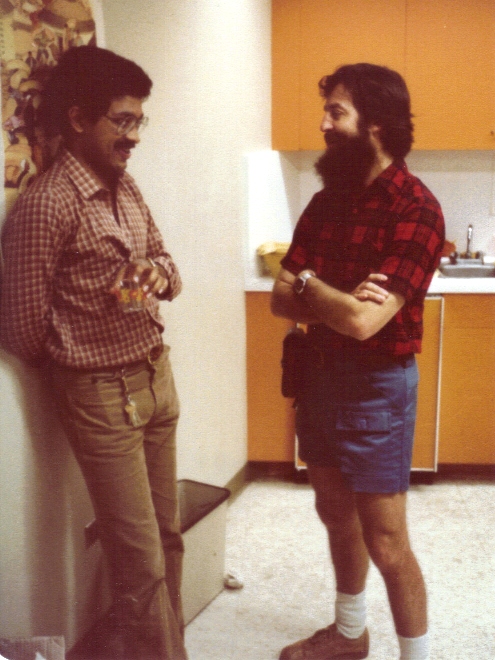
Jack Pettigrew (right) with V.S. Ramachandran at Caltech, December 1979.
At the Henry A. Lester Symposium, September 2015.
My other mentor at Caltech, Henry Lester, was always doing experiments with real cells and synapses, but he saw the results through the lens of mathematically rigorous theory. From him I learned the joys of applying mathematical models and computer simulation to complex biological problems, like the biophysical workings of a synapse. I have fond memories of long nights at the computer in Henry’s lab followed by exciting discussions of the results in his office the next day with him and his postdoc, Menasche Nass. In 2015, Caltech held a symposium in Henry's honor, and the breathtaking scope of his research was the dominant theme.
These two approaches — neuroethology and computational biology — would pull at me throughout my career, like two contenders in a tug o' war, and neither has yet clearly won. After Caltech I got my Ph.D. in the department of neurosciences at UC San Diego under Ted Bullock, one of the pioneers of neuroethology. His lab hosted many visiting scientists who enriched my education, and one of them, comparative neuroanatomist Glenn Northcutt, was especially influential. Ted was primarily a neurophysiologist, but he had extraordinarily broad interests and encyclopedic knowledge, and he once said that science needs a few people who try to assemble pieces of a puzzle that encompasses multiple disciplines, even at the risk of seeming dilettantish. He might have appreciated that aspect of The Illusion of God’s Presence had he lived to see it, despite his life-long Christian faith. Sadly, I’ll never know his reaction, but I’d like to think the book would have elicited his characteristically impish grin.
With Ted Bullock after my thesis defense, June 1987. Photo by Mary Ann Buckles.
Terry Sejnowski with Beatrice Golomb, November 1989.
After graduate school I was tugged sharply in the computational direction. I did a brief stint as a programmer in the lab of Mark Konishi, another neuroethologist at Caltech, then I did a postdoc in Terry Sejnowski’s Computational Neurobiology Lab at the Salk Institute. The research there mainly concerned the mechanisms of synaptic plasticity and memory. Terry’s lab was an exciting place, and it was a marvel to see the depth of his insights into the mysteries of the brain and his command of physics and mathematics. Our afternoon meetings were enlivened by Francis Crick, who had turned his attention to the neuroscience of consciousness, and by occasional visits from V.S. Ramachandran, the clever neurologist at UC San Diego whom I had first met in Jack Pettigrew’s lab. Like my other mentors, Terry was a superhuman in my eyes, capable of prodigious scientific output despite the many distractions that come with being a professor: supervising students, writing grant proposals, teaching, attending conferences, and serving on faculty committees. I was beginning to doubt that I could ever manage that degree of multitasking. I loved science, but I couldn’t see myself as a professor.
Around this time I was being seduced by another computational puzzle, the grand challenge known as the protein folding problem. Proteins are the molecular machinery of life. Each is made as a string of different amino acids, the sequence of which determines how the string will spontaneously fold and assemble itself into a unique three-dimensional conformation, thus making a working molecular machine. The sequence is easily obtained, but the three-dimensional structure is difficult to determine experimentally. In principle a sufficiently accurate computational model should be able to simulate the folding process, but no one had yet succeeded at this. I learned of a small business in San Diego, Biosym Technologies, that made computational modeling software for the pharmaceutical industry, and protein modeling was a big part of what they did. In 1991 I took the plunge, leaving academia and neuroscience to learn a new field. I spent four good years at Biosym working with Rick Lee, learning protein science, and getting a taste of what science is like in the commercial world. But I also learned that most businesses have little appetite for the kind of high-risk research I wanted to try, so I ultimately left Biosym to strike out on my own.
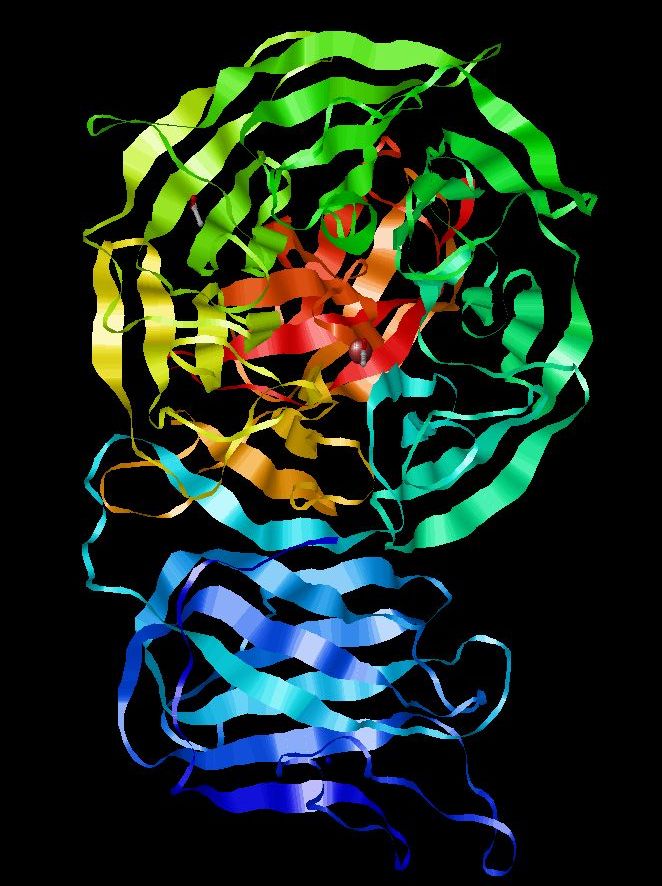
The protein galactose oxidase, rendered in RasMol, showing its beautiful beta-propeller fold.
for each generation
reproduce
mutate
recombine
evaluate
select
About Wathey Research
In 1996 I started my own small business, now named Wathey Research, to see if I could make something commercially viable from my ideas on computational protein folding. From my background in neuroethology I was especially impressed with the power of evolution at solving hard problems, and I had recently learned of some exciting attempts in various engineering disciplines to mimic evolution in computers as a problem-solving strategy. This was the approach I would take.
In broad outline, biochemists already understood how proteins fold. Some amino acids are oily molecules that want to coalesce with one another inside the folded protein, just as oil separates from water on a macroscopic scale. Others are electrically charged, and these want to be on the outside of the folded structure where they interact favorably with water molecules. There are, however, many other subtle forces and constraints involved, and the devil is in these details. Obviously the protein molecules themselves could solve the problem, so a solution exists. I thought evolutionary computation could solve it, too.
I applied for a grant from the National Institutes of Health through their Small Business Innovation Research program, and from about 1997 through 2006 they funded my efforts. I made good progress at first and, with the help of Tom Bartol, built a cluster computer to feed my growing hunger for cpu cycles. By 2007, however, I had hit a wall. One aspect of the problem, too arcane to describe here, refused to yield. My grant had recently run out, and I didn’t feel I could ask for more money unless and until I could somehow surmount that wall. I thought it might help to take a break from protein folding for a while, work on something completely different, and then return to it with a possibly fresher perspective. The 9/11 attacks, and especially the literary response to them from some prominent atheists, suggested a possibility for that completely different something.
Both innate and learned: a white-crowned sparrow near the Palisade lakes on the John Muir Trail (click image for video). Photo by Gwyn Sivertsen.
It had never been enough for me simply to reject religion as false. I had witnessed the powerful grip it has on people’s minds, and I had seen the harm it could do to familial relations. I also knew that religion was a cultural universal, which strongly suggested that something biological lay behind it. In college I had read Freud’s ideas on religion, and although his emphasis on its infantile aspect rang true, his explanation of this in terms of wish fulfillment and his Oedipal theory did not. I started thinking more seriously about it during graduate school, in part because I sometimes listened to religious radio broadcasts for their entertainment value, but also because I was immersed in neuroethology at the time. I began to think about a possible role for imprinting in the infantile aspect of adult religiousness, and by the mid 1980s the seeds of The Illusion of God’s Presence had germinated somewhere in my cerebral cortex. Over the next two decades I collected examples of infantile religious imagery as a hobby, only half-seriously thinking I might someday write a book on the subject. My biological interpretation evolved, too, shifting more in the direction of an innate mechanism coupled to subsequent reinforcement learning, a pattern for which abundant neuroethological evidence had emerged in many experimental systems, the development of bird song being one of the best studied. Then in July of 2001 I had my own vivid encounter with a sensed presence illusion. Two months later the twin towers fell, and atheists came out of the closet as never before.
By 2007 my long-held idle fantasy of writing a book on religion seemed like a reasonable sabbatical, and in April of that year I began writing what would ultimately become chapter 4. I thought the whole book would be only about a hundred pages and that I could easily finish it in a year or two. As someone who had already endured several painful lessons in Hofstadter’s Law, I should have known better. The project utterly consumed me for seven long, hard years. Along the way I acquired several new scientific friends and pen-pals who commented on parts of the manuscript and gave much-needed encouragement. Chief among these were Lee Kirkpatrick, Jonathan Haidt, Jeff Hawkins, and Susan Blackmore. For the complete list, including many long-time friends, colleagues, and family members, see the Acknowledgments section of the book. Despite the long ordeal, I ultimately found the right home for The Illusion of God's Presence at Prometheus Books, and all’s well that ends well. I’m thrilled with the finished product and delighted with how well Prometheus brought it to life. And part of the reason it took so long is that a second book emerged along the way.
During the months I had to await my turn in the queue at Prometheus, I returned to protein folding and the wall. I’m still not over it, but now I at least have a new strategy. For the next few years I expect to devote most of my time to promoting The Illusion of God’s Presence and to finishing its sequel, but I hope also to be tugged back into my computational work.
About the Logo
I wanted a logo for Wathey Research that visually expresses the power of evolution at solving complex problems. Many images from biology could have served equally well, but ultimately I settled on this slightly stylized drawing of the broadclub cuttlefish, Sepia latimanus, as it appears during its visually stunning predatory display. You can’t fully appreciate it from a still image, so be sure to watch the video clip of the real thing. If you have the time, you might also enjoy the entire hour-long documentary from which the clip was taken. Although this is often called a “mesmerizing” or “hypnotizing” display, I suspect it works by habituating, and thereby desensitizing, the detection of visual motion by the prey.
The logo turns out to be appropriate not only for the evolutionary computation at the heart of my work on protein folding, but also for my literary efforts. In my appendix on evolution, I compare the apparently elegant design of the eyes of cephalopods (like the cuttlefish) to the blatantly stupid design of the vertebrate eye — compelling evidence for evolutionary theory and against so-called “intelligent design” creationism. A similar argument lies at the core of my chapter 8 — “Is God an Evolutionary Hack?” — and the many elaborate visual tricks that cuttlefish do with their skin appear to be evolutionary "hacks" in that sense: the reusing for new purposes something that originally evolved as a means of camouflage. In my chapter 9, on the allure of cults and the evolution of human sociality, I use the female-impersonating behavior of smaller male cuttlefish to illustrate the concept of frequency-dependent selection. Amazingly, one species of cuttlefish can disguise itself as female on only one half of its body (the half that faces a rival male), while presenting its normal courting male appearance to a female on the other side!
About the Home Page
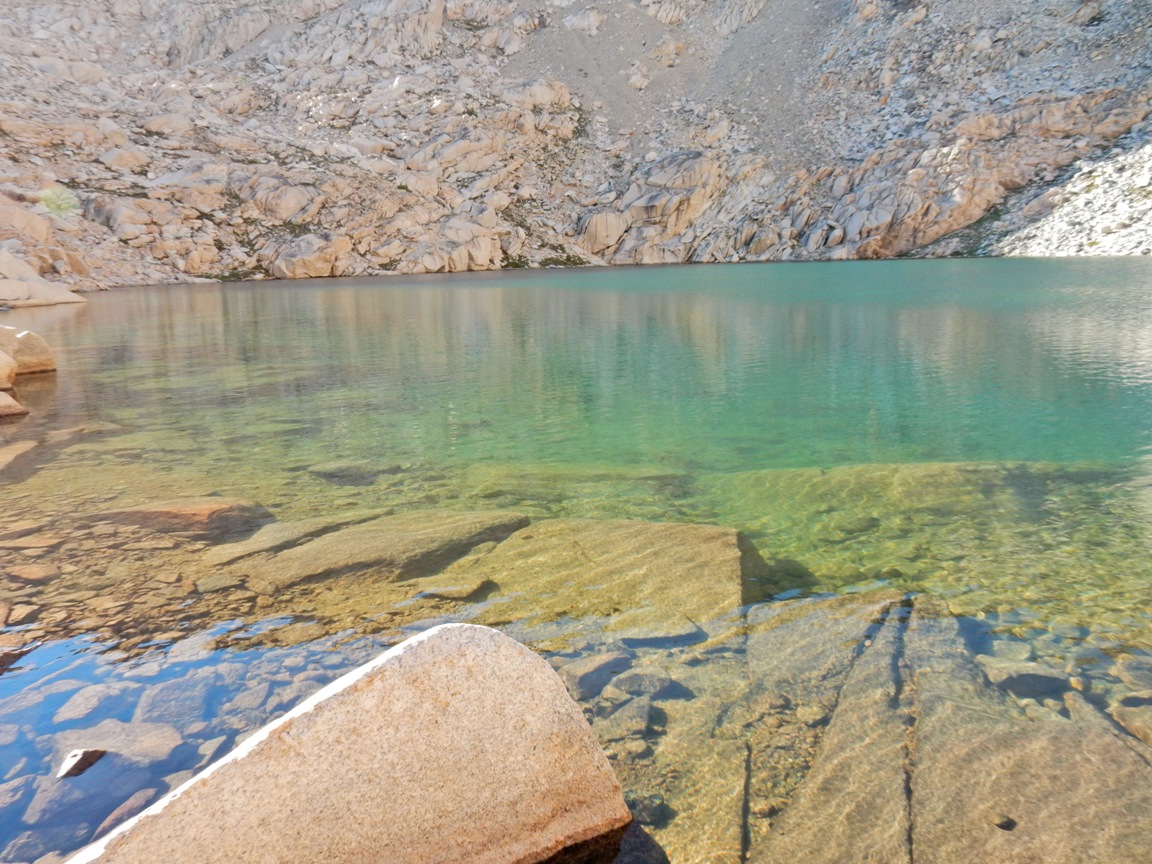 Photo by Gwyn Sivertsen.
Photo by Gwyn Sivertsen.
The glorious image on the home page comes from a backpacking trip in the Sierras with my wife, Mary Ann Buckles, and our long-time friends and hiking buddies, Dave and Gwyn Sivertsen. Gwyn took this photo of an unnamed lake just south of Glen Pass on the John Muir Trail. Below you can see her at about the time and place where she got this fabulous shot. Somehow she found exactly the right vantage point, with the sunlight at just the right angle, to see beneath the surface of the water. Apart from its stunning beauty, I thought it a nice metaphor for my attempt at seeing beneath the surface of religion. Incidentally there is no digital trickery in this image: the green color is from diffraction of the light by extremely fine particles of rock suspended in the water, a consequence of glacial erosion.
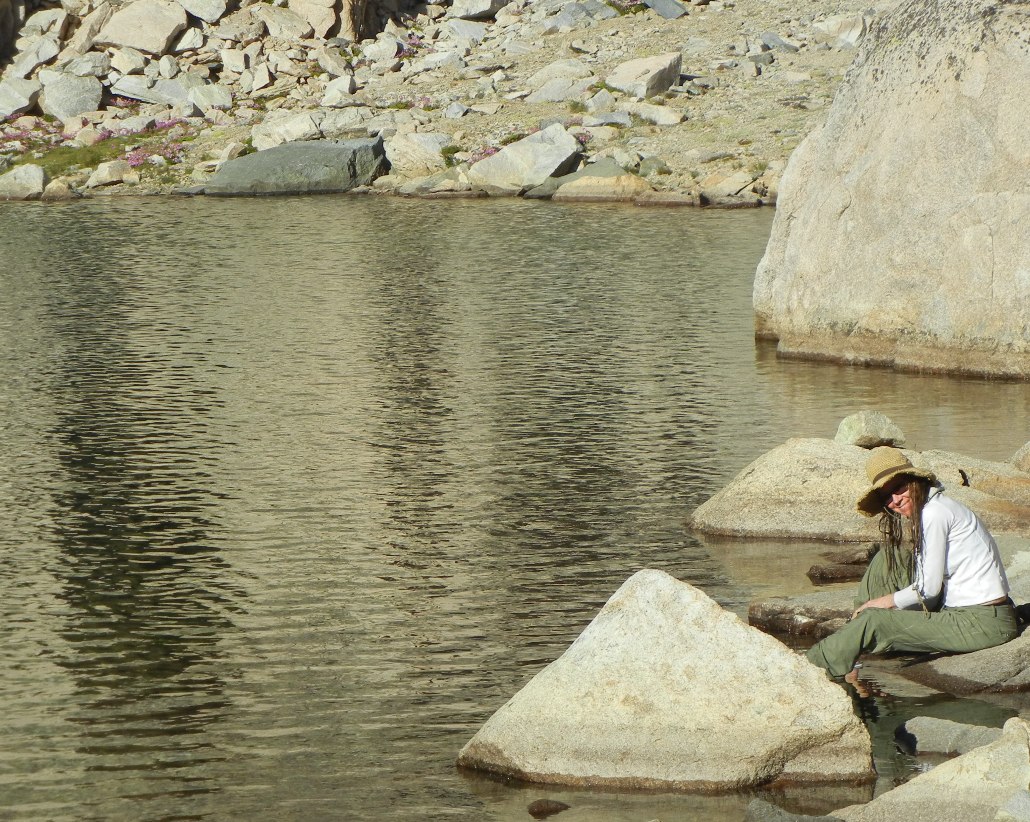 Photo by Dave Sivertsen.
Photo by Dave Sivertsen.
